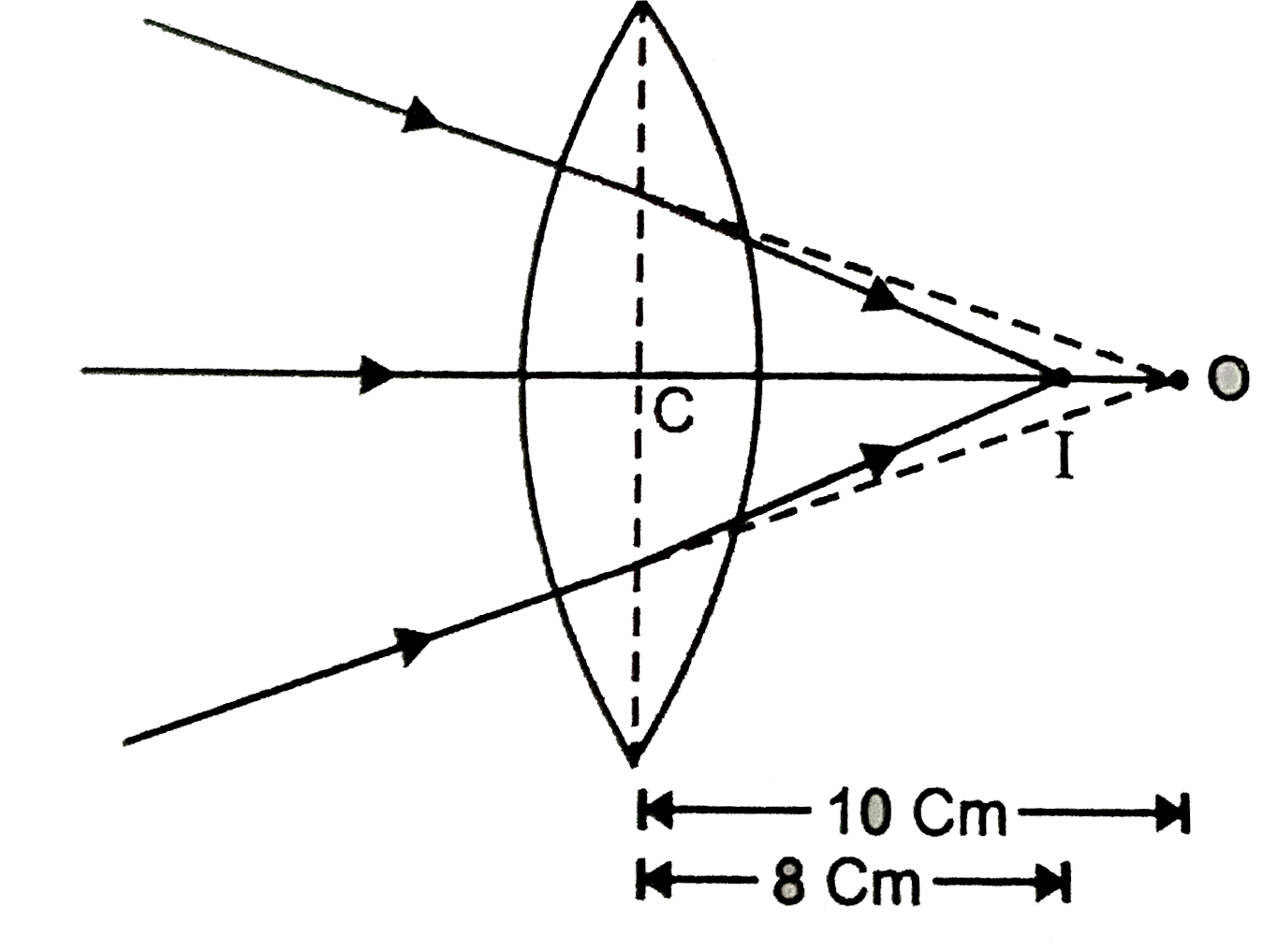Light from the sun is falling directly upon a Ramsden eye-piece consisting of lenses of focal length m. Find the position of the image formed and trace the path of rays through the eye-piece.
Step by step video & image solution for Light from the sun is falling directly upon a Ramsden eye-piece consisting of lenses of focal length 0.05m. Find the position of the image formed and trace the path of rays through the eye-piece. by Physics experts to help you in doubts & scoring excellent marks in Class 12 exams.
Updated on:21/07/2023Topper's Solved these Questions
Similar Questions
A Huygens eye-piece is made by arranging two planoconvex lenses of focal lengths 0.03m and 0.09m in the usual manner. Light falls directly on the field lens of the eye-piece. Calculate the position of the final image formed by the eye-piece and trace the path of rays showing the formation of images.
View SolutionRays of light are falling on a convex lens of focal length 40cm. As shown in Fig. Determine the position of the image.
 .
.
View Solution
Knowledge Check
Rays of light from Sun falls on a biconvex lens of focal length f and the circular image of Sun of radius r is formed on the focal plane of the lens. Then
AArea of image is πr2 and area is directly proportional of fBArea of image is πr2 and area is directly proportional of f2CIntensity of image increases if f is increasedDIf lower half of the lens is covered with black paper area will become halfA simple telescope, consisting of an objective of focal length 60cm and a single eye lens of focal length 5cm is focused on a distant object in such a way that parallel rays emerge form the eye lens. If the object makes an angle of 2∘ at the objective, the angular width if the image is
A10∘B24∘C50∘D60∘
Converging light rays are falling on a convex lens. If the focal length of the lens is 30 cm, then find the position of the image.
View SolutionAn astronomical telescope consisting of an objective of focal length 60cm and eye-piece of focal length 3cm is focused on the moon so that the final image is formed at least distance vision, i.e. 25cm from the eye-piece piece. Assuming the angular diameter of moon as 1/2∘ at the objective, calculate (a) angular size and (b) lenear size of image seen through the telescope.
View SolutionA compound microscope has an objective of focal length 2 cm and eye-piece of focal length 5 cm. The distance between the two lenses is 25 cm. If the final image is at a distance of 25 cm from the eye-piece, find the magnifying power of the microscope. What would be the magnifying power if the microscope were reversed ?
View SolutionA small telescope has an objective lens of focal length 144cm and an eye-piece of focal length 6.0cm. What is the magnifying power of the telescope ? What is the separation between the objective and the eye-piece ?
View SolutionTwo thin converging lenses of focal length 0.05m are separted by a distance of 0.03m. Find the focal length of the eye-piece and determine wheather this will be a positive or negative eye-piece. Will it be free from spherical and chromatic aberration?
View SolutionA refracting telescope has an objective of focal length 1m and an eye piece of focal length 20cm. The final image of the sun 10cm in diameter is formed at a distance of 24cm from eye piece. What angle does the sun subtend at the objective ?
View Solution
